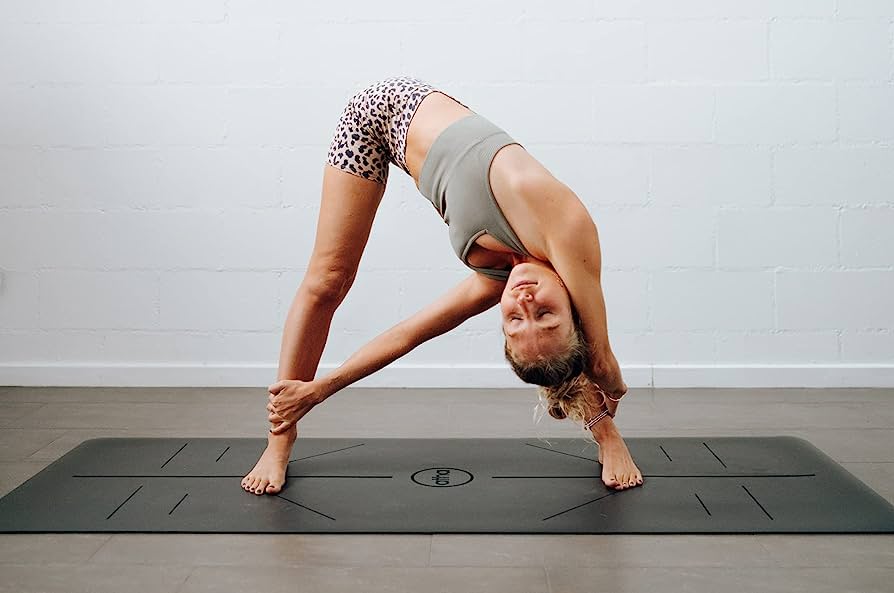
Yoga mats are an essential tool for yoga practitioners, providing cushioning and support for the body during physical practice. However, many people don’t realize that a yoga mat can also be used for meditation. A yoga mat can provide a comfortable and supportive surface for seated meditation, allowing you to find stillness and focus your mind. In this article, we’ll discuss how to use a yoga mat for meditation and how to find stillness and comfort during your practice.
Why Use a Yoga Mat for Meditation?
Using a yoga mat for meditation can provide several benefits. Firstly, a yoga mat can provide a comfortable and supportive surface for seated meditation. Sitting on a hard floor can be uncomfortable and distracting, which can make it difficult to focus on your breath and thoughts. A yoga mat can provide cushioning and support for your sit bones, hips, and knees, allowing you to sit comfortably for longer periods of time.
Secondly, a yoga mat can help define your personal space and create a sense of boundary during your meditation practice. When you sit on a yoga mat, you have a clear boundary that separates your personal space from the rest of the room. This can be helpful if you’re meditating in a public or crowded space and need to create a sense of privacy and focus.
Lastly, a yoga mat can provide a symbolic connection to your yoga practice. If you use the same mat for both yoga and meditation, it can help create a sense of continuity and mindfulness between your physical and mental practices.
How to Use a Yoga Mat for Meditation
Choose a Comfortable Seated Position
The first step in using a yoga mat for meditation is to choose a comfortable seated position. There are several options for seated meditation, including:
Cross-legged position: This is the most common seated meditation position, with the legs crossed and the hips elevated on a cushion or folded blanket.
Half-lotus position: This is a variation of the cross-legged position, with one foot resting on the opposite thigh and the other foot tucked under the opposite knee.
Full-lotus position: This is a more advanced seated meditation position, with both feet resting on the opposite thighs.
Choose a position that feels comfortable and allows you to sit with a tall spine and relaxed shoulders.
Find Your Sitting Bones
Once you’ve chosen a seated position, it’s important to find your sitting bones. Your sitting bones are the bony protrusions at the base of your pelvis that make contact with the surface you’re sitting on. Finding your sitting bones can help you sit with proper alignment and prevent slouching or leaning forward during meditation.
To find your sitting bones, sit on the edge of your yoga mat with your legs crossed. Rock back and forth on your sit bones until you find a comfortable and stable position.
Elevate Your Hips
If you’re sitting cross-legged, it can be helpful to elevate your hips on a cushion or folded blanket. This can help bring your hips above your knees, allowing you to sit with a tall spine and relaxed shoulders. A cushion or blanket can also provide additional cushioning and support for your hips and knees.
Relax Your Body
Once you’re in a comfortable seated position, take a few deep breaths and relax your body. Allow your shoulders to soften and your jaw to release. Relax your arms and hands, allowing them to rest on your thighs or in your lap. Close your eyes or soften your gaze and turn your attention inward.
Focus on Your Breath
Bring your attention to your breath, noticing the sensation of air moving in and out of your body. You can focus on the feeling of the breath in your nostrils, the rise and fall of your chest, or the movement of your belly. If your attention wanders, gently bring it back to your breath, without judgment or criticism.
Set a Timer
If you’re new to meditation, it can be helpful to set a timer to avoid checking the clock or becoming distracted by time. Start with a short period of time, such as five or ten minutes, and gradually increase your meditation time as you become more comfortable and focused.
In conclusion, using a yoga mat for meditation can provide a comfortable and supportive surface for finding stillness and focusing your mind. Choose a comfortable seated position, find your sitting bones, and relax your body. Use props if necessary, sit tall, and focus on your breath.

